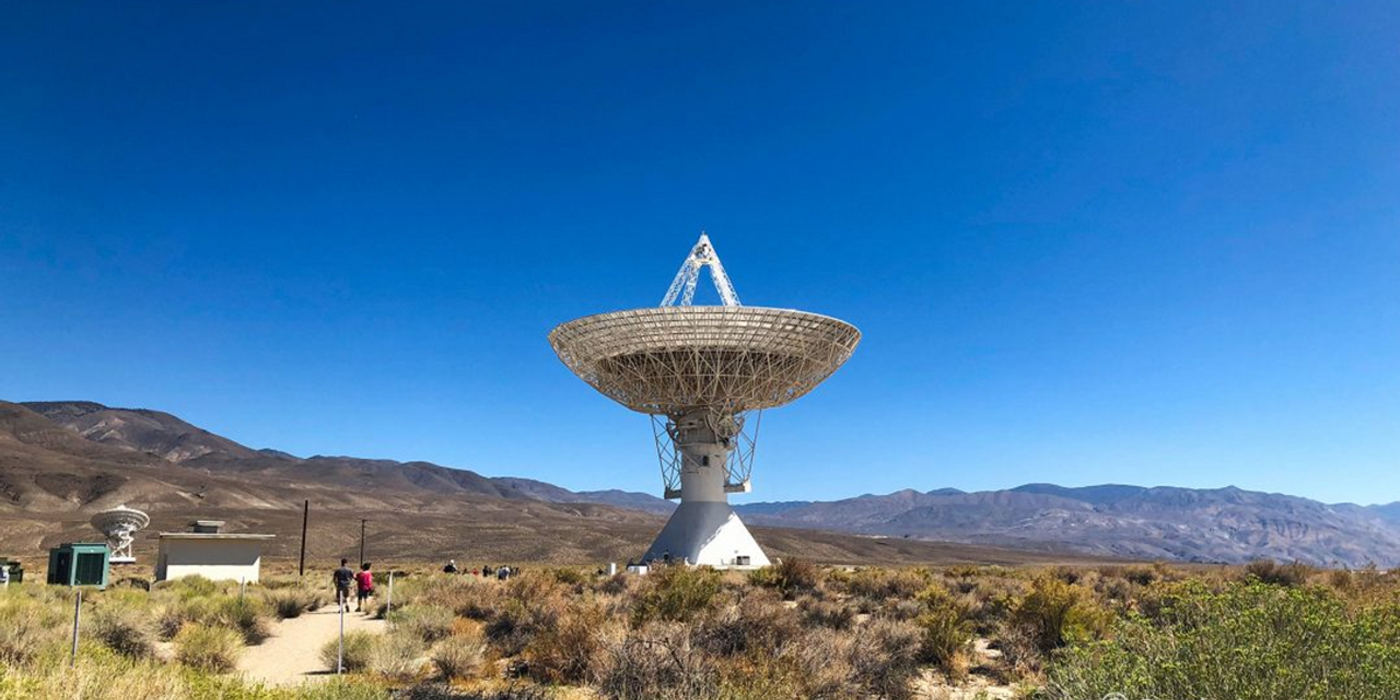Mysterious Cosmic Radio Signal Pinpointed to its Source
Releasing the 80 years-worth solar energy in just a tiny fraction of a second, fast radio burst (FRB) is the one of most energetic and mysterious phenomenon humankind has ever detected.
Working with their collaborators at Hawaii's W. M. Keck Observatory, radio-astronomers at Caltech's Owens Valley Radio Observatory (OVRO) succeeded in tracing a recent signal known as FRB 190523 (the six digits indicate the date of its first detection May 23, 2019) to its origin—a Milkway-like galaxy around 7.9 billion light-years away.
First discovered almost two decades ago, fast radio bursts are transient radio pulses, most of which only last up to a few milliseconds. A handful of these signals have been mapped to their origins. Take FRB 121102 for instance, the signal with a repeating pattern (21 bursts within the first hour of detection) was co-located within a dwarf galaxy that's 3 billion light-years from Earth. The cosmological distance the signal traveled reveals the highly-energetic nature of its source.
Just like the phenomenon of pulsars discovered for the first time in the 1960s, many speculate the FBRs to be radio transmission sent by distant civilizations, a tantalizing idea with no proof. Recent studies have amassed some strong evidence that links the cause of FBRs to magnetars, a type of neutron star. With a magnetic field at between 109 and 1011 tesla, a magnetar is believed to be capable of emitting radio pulses that can journey across galaxies.
But the analysis on FRB 190523 suggests that this pulse is bucking the trend since the galaxy of its origin is unlikely to host young, highly magnetic neutron stars.
In an internal news release, Vikram Ravi, an assistant professor of astronomy and the lead investigator of the study commented on the uniqueness of FRB 190523's origin: "The theory that FRBs come from magnetars was developed in part because the earlier FRB 121102 came from an active star-forming environment, where young magnetars can be formed in the supernovae of massive stars. But the host galaxy of FRB 190523 is more mellow in comparison. "
Scientists hope that by detecting and analyzing more FRBs in the future, they can peer further into the mysterious nature of these radio pulses.
For the discovery of FRB 190523, astronomers at Caltech relied on the newly constructed Deep Synoptic Array at OVRO. There are currently ten 4.5 meters-wide radiotelescopes in the array. With the continuous funding support from the National Science Foundation, astronomers expect to complete the entire project with a total of 110 highly-sensitive radio dishes.
This research was published online in the journal Nature in July.
Interested in learning more about Fast Radio Bursts? Check out the following video by PBS SciShow.
The Mystery of Fast Radio Bursts (SciShow Space)
Source: Discover Magazine









